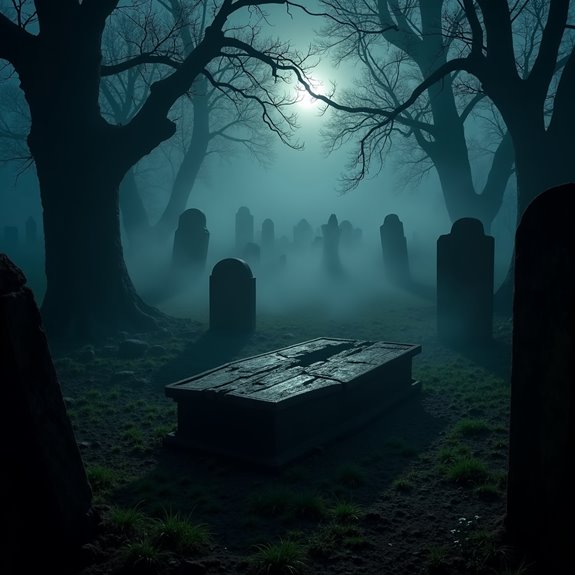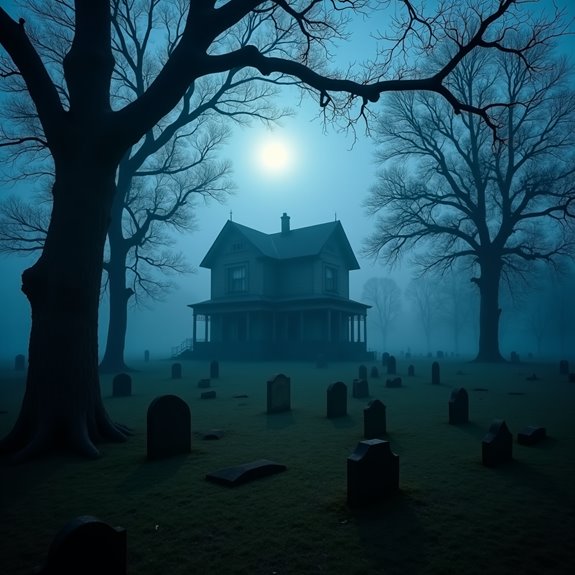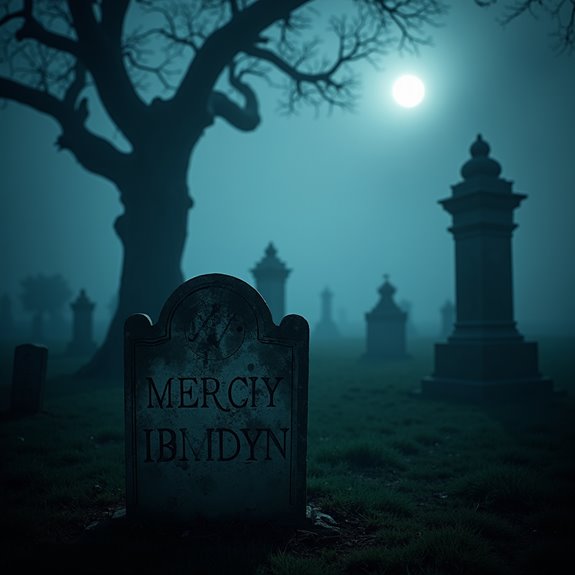Was There a Real Vampire Panic in Rhode Island?
In the 19th century, Rhode Island experienced a peculiar phenomenon often described as a vampire panic. Communities, grappling with tuberculosis outbreaks, turned to folklore in their desperation. They believed deceased individuals were rising from their graves to torment the living. Key incidents, such as the exhumation of Mercy Brown, captivated townsfolk’s imaginations. This led to bizarre rituals surrounding funerals. What events fueled this fear, and how did it shape local culture?
Introduction

As fears of disease and death gripped 19th-century Rhode Island, the townsfolk turned to an unsettling solution: the belief in vampires. During this dark period, a series of tuberculosis outbreaks struck communities, leading them to suspect that the deceased were returning to prey on the living. Whispers grew about restless spirits, and folk remedies morphed into rituals targeting supposed vampires. Families dug up graves, seeking to confront the undead threat head-on, convinced that such measures could protect their loved ones. The dread lingering in the air fueled imaginations and spread panic, transforming ordinary funerals into scenes of hysteria. Though lacking scientific backing, these beliefs deeply entwined with local culture and fears, showcasing how desperation can lead people to the most drastic conclusions.
Vampire Folklore in New England

While many people associate vampires with European lore, New England’s history is rich with its own unique tales of the undead. Local legend speaks of bloodsucking creatures that roamed the woods, preying on the superstitious and vulnerable. Folklore often intertwined with community fears about disease and death, leading to the idea that the dead could rise and torment the living. Ghostly apparitions and tales of shambling corpses created a terrifying landscape where people believed in the supernatural. Ritualistic burials and protective charms were commonly employed to ward off these supposed vampires. Each story reflected deeper anxieties within the community, making vampire folklore a fascinating, albeit chilling, part of New England’s cultural heritage, cementing the area’s eerie reputation in American horror history.
Notable Cases or Sightings

Several notable cases of suspected vampire activity have emerged from Rhode Island’s eerie past, each steeped in local lore and fear. One of the most famous incidents occurred in the 19th century in the village of Exeter, where the Graves family faced a mysterious illness. Locals believed that the deceased family member, Mercy Brown, had risen from the grave, causing the sickness. This led to an exhumation and the discovery of unsettling conditions in her coffin. In another case, communities reported sightings of a shadowy figure prowling graveyards, heightening anxieties. These events fueled a growing belief in the supernatural and solidified the idea that vampires could roam the night, impacting local culture and fears for years to come.
Common Theories or Explanations
Local lore surrounding vampire sightings and activities in Rhode Island sparked numerous theories and explanations, attempting to make sense of the fear that gripped communities. Some researchers suggested that tuberculosis outbreaks were mistaken for vampirism, as symptoms mirrored those associated with blood-sucking creatures. Others pointed to the high mortality rates in the 19th century, leading to funerary practices that fueled vampire myths. Folklorist studies highlighted cultural beliefs from European immigrants, with superstitions blending into local customs. Additionally, the rise of literature and media depicting vampires may have influenced public perception, where fear became amplified. Though some argued it was merely hysteria, the combination of health crises, folklore, and media certainly contributed to the eerie fascination with vampires in the region.
Frequently Asked Questions
How Did the Vampire Panic Impact Local Communities in Rhode Island?
The vampire panic instilled fear in local communities, sparking distrust and superstition. Families often turned to rituals for protection, and the sense of community frayed as neighbors blamed each other for supposed hauntings and misfortunes.
Were There Any Documented Vampire-Related Rituals Conducted in Rhode Island?
There’re few documented vampire-related rituals in Rhode Island. Most stories revolve around folklore and local legends, reflecting community fears rather than organized practices. Historical records primarily focus on myths rather than confirmed rituals occurring in the region.
Did the Vampire Panic Influence Rhode Island’s Cultural Identity?
The vampire panic greatly shaped Rhode Island’s cultural identity, intertwining folklore with local traditions. Residents embraced stories of the supernatural, creating a unique narrative that continues to influence celebrations, tourism, and regional storytelling traditions today.
How Did Neighboring States React to Rhode Island’S Vampire Panic?
Neighboring states reacted with skepticism and curiosity, often mocking Rhode Island’s vampire panic. They viewed it as sensationalism fueled by superstition, believing the phenomenon reflected more of a local quirk than any legitimate fear or threat.
What Role Did Newspapers Play in Spreading Vampire Hysteria?
Newspapers fueled vampire hysteria by sensationalizing reports and spreading fear. They published lurid tales, enticing readers with shocking headlines and dramatic stories, which amplified public panic and curiosity about alleged supernatural occurrences in their communities.


